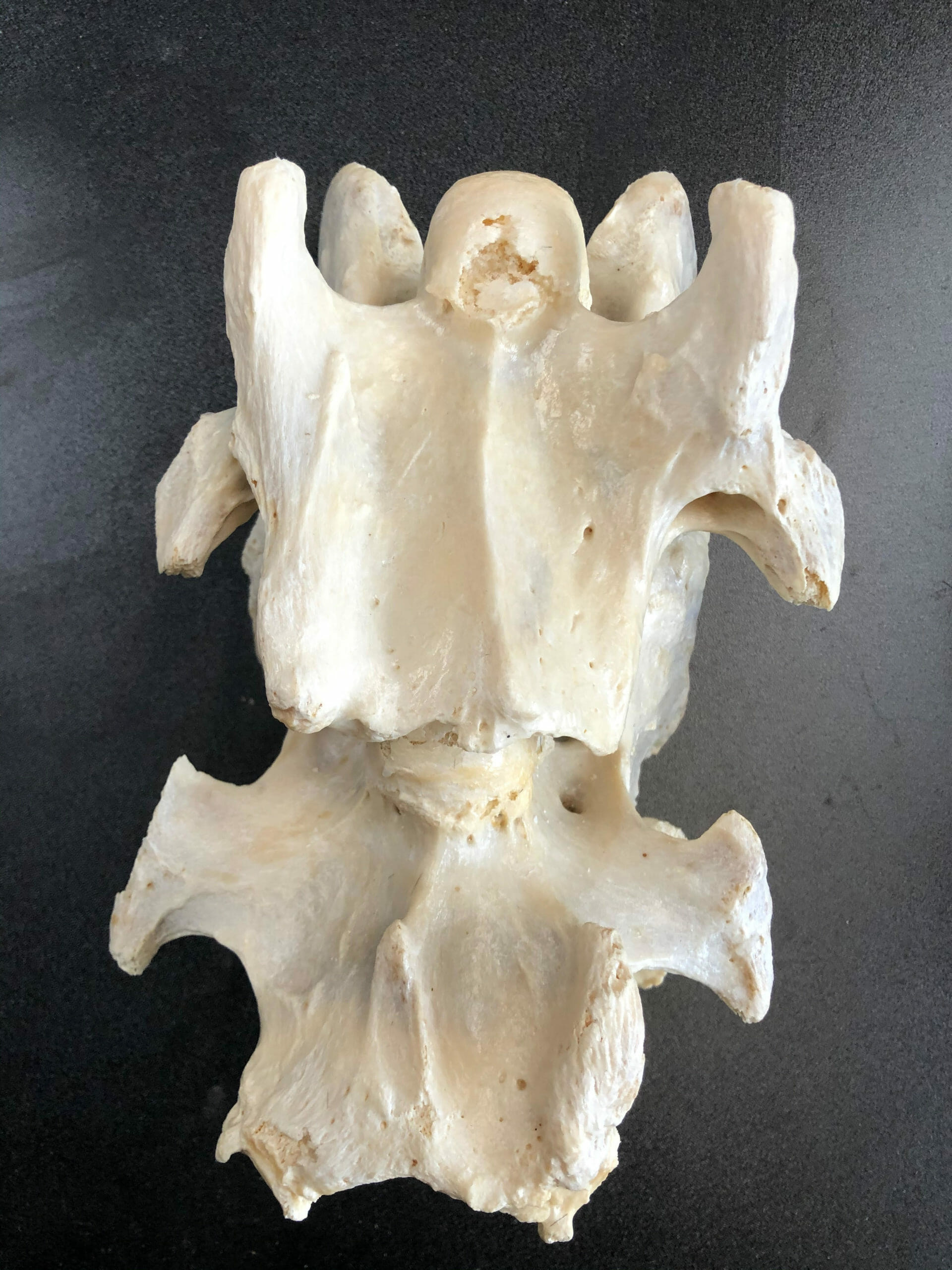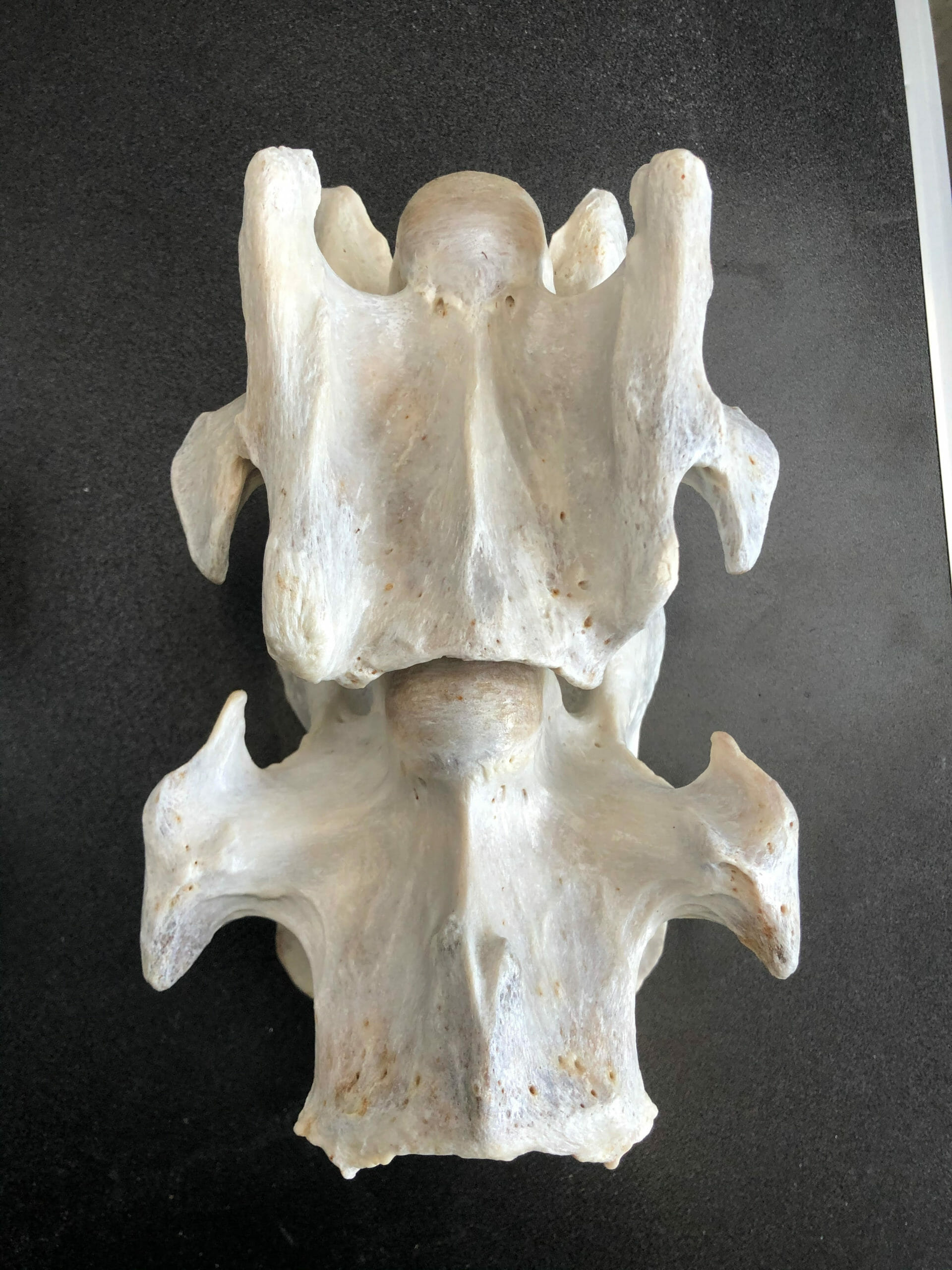Equine Complex Vertebral Malformation (ECVM)

In recent years, the work of Sharon May-Davis, an anatomist from Australia, who has most probably dissected more horses than anyone, has become more and more important for the equine industry and for anyone who has ever owned one of those horses with mysterious and never-ending problems.
What her dissections have revealed is that a horrific number of horses exhibit what became referred to as Equine Complex Vertebral Malformation. A mouthful, I know, but don’t worry, it is really not as difficult to understand as it sounds.
What is ecvm?
Dissections of modern horses have revealed that a sizeable proportion of them (think 40% Dutch Warmbloods) exhibit malformed lower cervical vertebrae, namely the sixth and seventh neck vertebrae. This malformation can come in different shapes and sizes, and it can involve the ribs and sternum as well.
Put very simply, what happens is that a couple of »bumps« on the last cervical vertebra are simply missing or are transposed to the neighboring vertebra. This might not sound too bad, but it can have very severe consequences. Those bumps are there for a reason – they are attachment sites for muscles.
If they are absent, the muscles can’t attach where they normally would. The main muscle in question here is m. longus colli. Does that muscle ring a bell? It should! It is a very important muscle, responsible for lifting the base of the neck. Lifting the base of the neck is one of the steps the horse takes towards collection.
The horse lifts the base of the neck, lifts through the withers, engages his abdominal muscles and activates the hind end. When the horse is vertically balanced and is moving in a nice forward, out and down posture and is arching his neck so it appears longer, he is lifting the base of the neck.
He is using the muscles underneath the base (m. longus colli being one of the main actors here) to lift up. But, if the horse lacks the attachment sites for the muscle, this lifting will be very difficult, if not impossible for him.
Other complications
Unfortunately, this is not the only consequence. In addition to the bumps being absent, the vertebral canal (the opening through which the spinal cord runs) can become deformed as well. This can cause neurological issues, which can show up as issues with balance and coordination.
Sometimes, the malformation is present on one side of the vertebrae and other times it can present on both sides. Talk about natural asymmetry! This malformation can have dire consequences and it has been found in many modern breeds, including, Warmbloods, Thoroughbreds, Standardbreds, Arabs and many more. It is genetic, which means it is passed down through generations.
Symptoms and diagnosis
The symptoms of this condition can vary and they can be progressive, especially as the horse nears his tenth year. Horses with this malformation can have issues with coordination and proprioception, making them seem clumsy or prone to tripping or even falling.
They can be severely asymmetrical (no wonder, as their entire spine is asymmetrical), which is especially evident during work. This asymmetry doesn’t seem to be improved by bodywork, training or changing tack. The horse will often have a series of unexplained lamenesses, coming and going, seemingly out of nowhere.
The asymmetry in the spine is often accompanied by problems in the teeth and imbalances in the feet. Often, the horse will be very sensitive to palpation, and sensitive overall. He can be great one day and a complete monster the next day. Often, horses with this malformation are known for their explosive or unpredictable behaviour.
X-ray protocol
Because the symptoms are fairly unspecific and variable, a good, accurate diagnosis is a must. The condition can be diagnosed by x-rays of C6, which need to be done in a specific manner.
Dr. Christine Gee wrote a research paper thoroughly describing the radiographic technique used to take a good x-ray. Simply slapping an ECVM label on any horse that sometimes stumbles and can be difficult to handle is not going to help anyone. We need accurate diagnoses, so we know where we stand.

A genetic condition
It goes without saying there is no magic wand to make the malformation go away. We are talking about bones that have developed in an abnormal way. No amount of bodywork, physical therapy or training will make this go away. Since it is a genetic condition, the future of the equestrian sport is heavily linked to our ability to watch for this malformation like hawks, in order to avoid it becoming even more prevalent.
This is why Sharon May-Davis’ work is so important. We need to stay on top of this before it becomes even more widespread. Luckily, more and more equine professionals all over the world are getting involved in this project. A Dutch team, led by Dr. Zefanja Vermeulen, is doing a wonderful job spreading the information about ECVM and educating people about it.
Practical implications
Maybe the following story has happened to you or maybe it has happened to someone you know. These stories are not rare. You buy a horse, a wonderful, young Warmblood that’s going to win you loads of ribbons in dressage competitions. Everything goes well in the beginning, but then problems start to arise.
At first, there might be an asymmetric feeling in the saddle, a training issue it seems. But despite the help of the best trainer you know, despite many visits from the bodyworker, the issue does not go away. In fact, it becomes worse. The horse might go lame for a while, is then sound again, only to go lame again a few months after.
He becomes difficult to handle and unpredictable. His attitude becomes more and more sour. Vets are running out of ideas, you are becoming more and more desperate. Whatever you do, the horse seems to get worse and worse.
At the end of the day, the horse either gets passed on to someone else, who then struggles with the same issues, or is put down. This is an absolutely awful and heart-breaking story that no horse owner should live through. Unfortunately, these are not so rare. Very often, the reason behind it is a malformation present from birth that is making life very, very difficult for the horse.
What can we do?
There are two things that need to happen: we need to stop buying horses with this malformation and we need to stop breeding them. For both of those things to happen, we need to take C6 x-rays of as many horses as we can. For that to happen, veterinarians need to learn how to take a good C6 x-ray. For that to happen, customers need to ask for it. And for that to happen, you guessed it, we need to be educated enough to know about ECVM.
So, even if you think this has nothing to do with you because you own a quiet, reliable Icelandic horse, it has everything to do with you. When your friend is thinking of buying that gorgeous Warmblood with impressive movement, you might suggest to take C6 x-rays just to be sure.
You might save your friend from the heartache that comes from owning such a horse. Slowly, the equine industry will stop breeding these horses and we will see less and less of the malformation.

An important issue for equestrians everywhere
Now, you might call me a naïve dreamer at this stage, but we have to believe it is possible. Knowing about ECVM should be mandatory for everyone involved in horses. If this is the first time you are hearing about it and you are freaked out, you are not alone.
There are many resources out there offering more information, offering advice for people who suspect their horse has the malformation. And – good news – there are even people who can advise you on how to manage these horses to make their lives as easy as possible.
Recently, the Dutch team have launched a website called ECVM All Breeds, which is spreading awareness about the malformation and gathering data in order to investigate the issue further. Go visit their website and learn a bit more about this subject. You will find links to studies, articles, videos, webinars, all sorts of useful things and you can contact the experts if you have any specific questions. Be proactive, this is an important issue for equestrians everywhere!
All photos credited to Zefanja Vermeulen, used with permission.